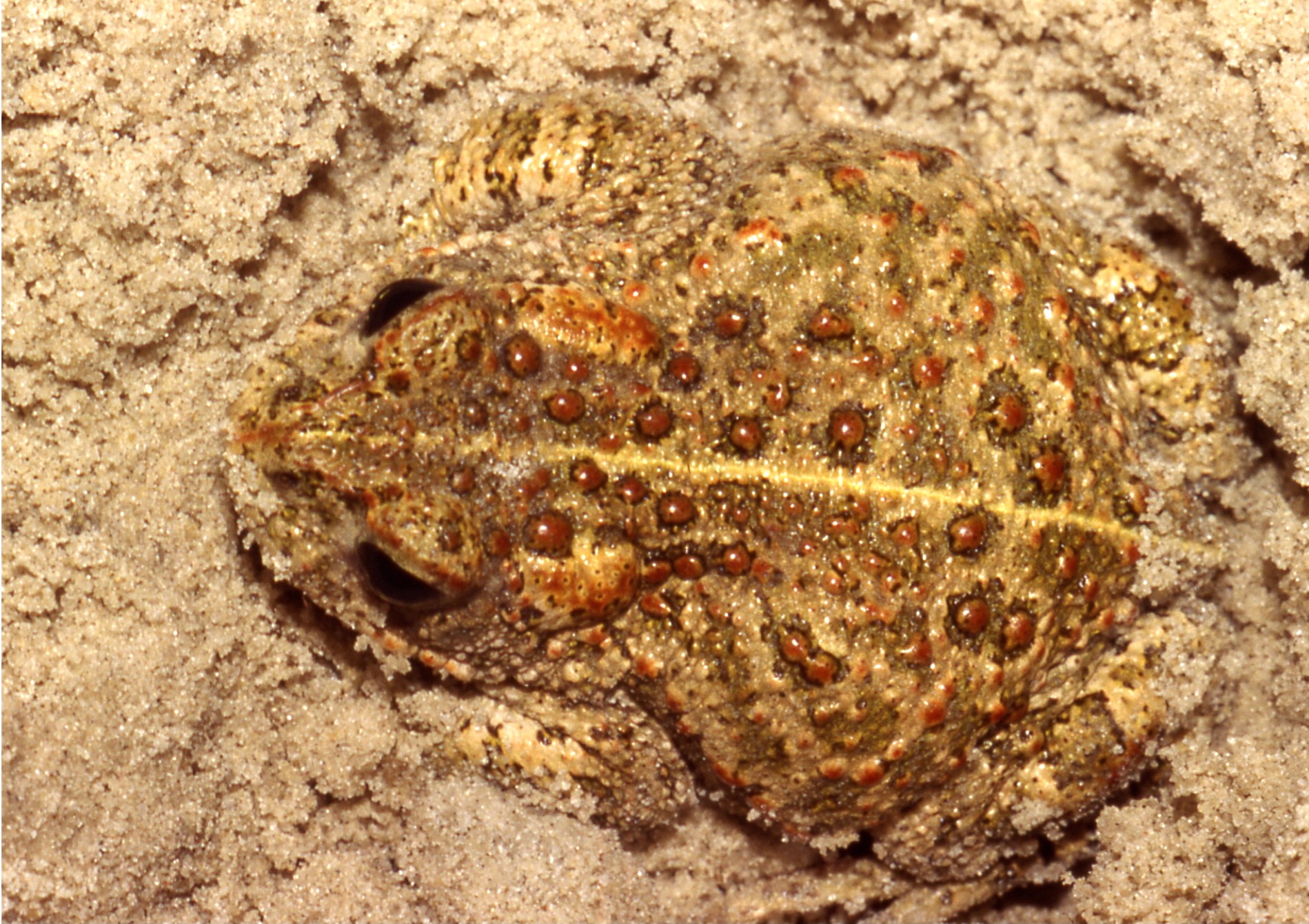| New Photos | Animal News | Animal Sounds | Animal Movies | Upload Photo | Copyright | Korean |
|---|
| Funny Animal Photos | Monsters in Animalia | Wiki Articles Fun Facts about Animals | Links | Home | Mobile A.P.A. |
|---|
| Image Info | Original File Name: Bufo-Calamita_Sand-Natterjack Toad (Epidalea calamita).jpg Resolution: 1899x1341 File Size: 706633 Bytes Upload Time: 2007:11:01 11:28:01 | |
| Author | Name (E-mail): Unknown | |
| Subject | Natterjack Toad (Epidalea calamita) - Wiki | |
 |
| Email : E-Card | Poster | Web Master Delete Edit Info Admin |
| Description | Natterjack Toad (Epidalea calamita) - Wiki
Natterjack Toad
The Natterjack Toad (Epidalea calamita, formerly Bufo calamita) is a toad native to sandy and heathland areas of Northern Europe. Adults are 60 - 70 mm in length and are distinquished from the common toad by a yellow line down the middle of the back. They have relatively long legs, and this gives them a distinctive gait, contrasting with the hopping movement of many other toad species. Natterjacks have a very loud and distinctive mating call, amplified by the single vocal sack found under the chin of the male animal. Life history This toad lives for up to 12 years and feeds on insects, weevils and other small animals. At night it moves along open terrains with very sparse vegetation and in loose sand the tracks can often be seen. They move along considerable distances each night, which enables the species to colonize new habitats very quickly. Reproduction The Natterjack Toad spawns between the end of April and July, laying 'strings' of eggs in shallow pools. The loud mating calls are important because the Natterjack Toad is often present in low numbers so it is important that the sexes can find each other. The pools need to have a very slight slope with a sparse vegetation on the banks and in the water. These are very often temporary pools and sometimes the larvae die when the pools dry out. The Natterjack however compensates for that risk by mating a few times each summer and the age of the juveniles can vary from a month to 3 months in september. It appears that the early breeders are not the same individuals as the toads that reproduce later in the season. Conservation In the UK this species is one of only three amphibians protected under the national Biodiversity Action Plan. The reason for the threatened status of this organism is: (a) loss of habitat from human overpopulation, (b) reduction in habitable coast from construction of dykes and seawalls, and (c) acidification of aquatic habitat from acid rain and other pollution factors. http://en.wikipedia.org/wiki/Natterjack_Toad
| |||
| Copyright Info | AnimmalPicturesArchive.com does not have the copyright for this image. This photograph or artwork is copyright by the photographer or the original artist. If you are to use this photograph, please contact the copyright owner or the poster. |
|
|
|
| |||||||
| CopyLeft © since 1995, Animal Pictures Archive. All rights may be reserved. | ||||||||
Stats